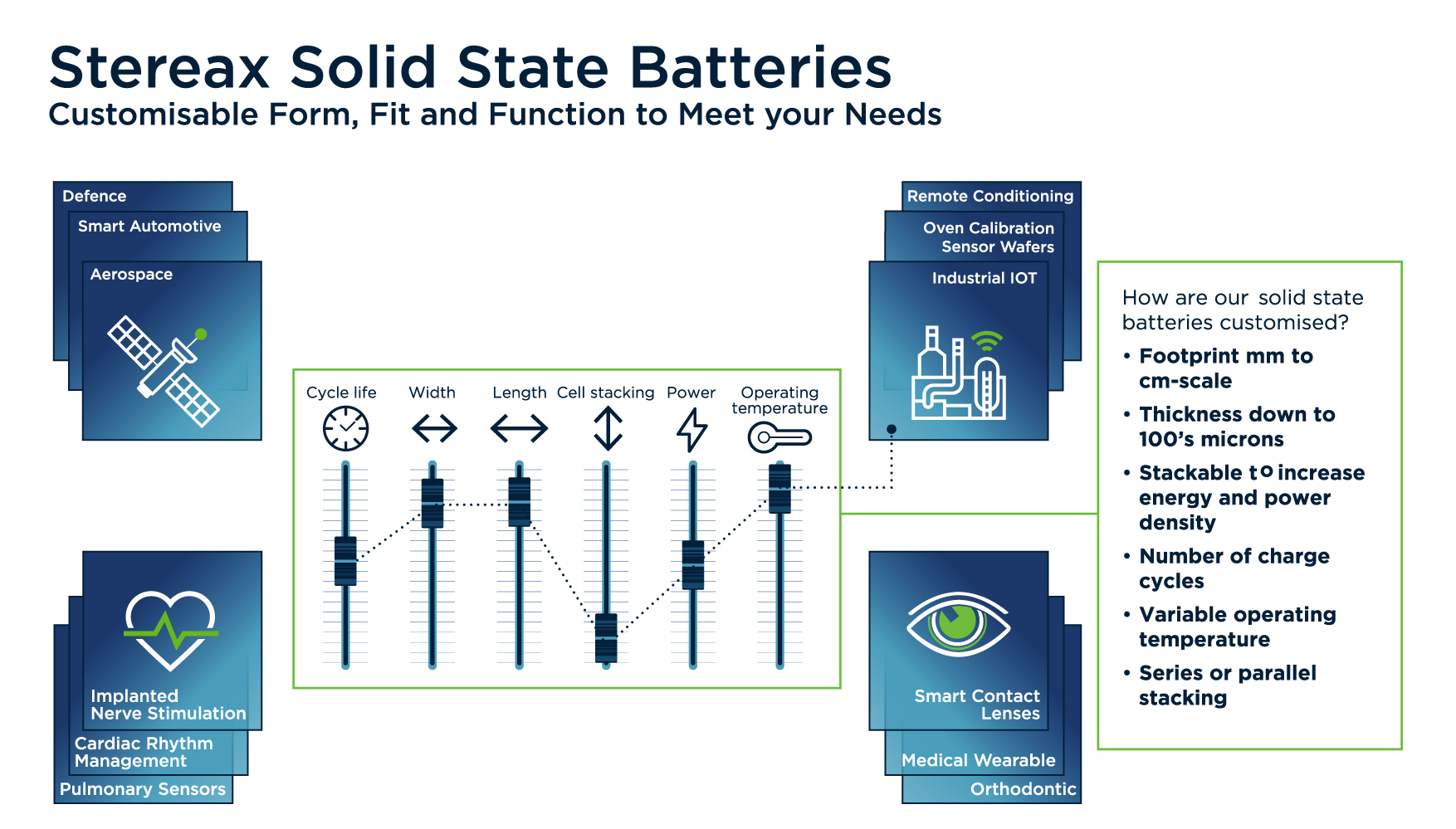Next Generation IoT Applications Need Next Generation Power
Posted on: in Blog
Got a great idea for an IoT device but don’t know how to take it to its full potential? Too often designers and engineers have great ideas for an innovative IoT product but they fail to come to fruition through no fault of the design itself. A key challenge is how these next-generation devices are powered in a way that is acceptable to the designer and end user. Whether in MedTech, Industrial IoT, smart cities or everyday electronic products, for a next generation device to reach its full potential it needs an efficient source of power.
In the word of small IoT edge nodes or medical implants, cabled power is nearly always impractical and expensive and up to now, battery power has had its own limitations. Whilst in theory it may be able to power the device perfectly, in reality it can be the wrong size, shape or form and of course the wrong performance. One size doesn’t fit all – and that’s why at Ilika, we’ve been developing customisable solid state batteries.
In this blog, we show how a customised solution is often the only solution because the devices themselves are so individual.
A first example of a product with specific power requirements – in the Medical Wearable market – is the smart contact lens. Here, size is everything, with the electronic components being placed on the edge of the lens so they don’t interfere with the wearer’s comfort and vision. These components can include:
- A very thin battery
- Micro-processor or communication chip
- Some memory to store data
- A circular antenna band
- Possible way of displaying or projecting images on the retina

That’s a lot on one contact lens, so the battery cannot have a footprint more than a few mm2max and be no thicker than 400 um whilst still having the high energy density required if the smart contact lens is intended for AR or VR.
Innovation and disruption with implanted medical devices offers many benefits to both patients and healthcare practitioners. Next generation devices will grow smaller than they are now, with unusual battery sizes remaining a key requirement to fit in devices that will be implanted inside arteries, on nerves, or inside the ear; along with high energy density and long life needs. With development in implanted sensors or stimulation devices, to cure Parkinsons or strokes, tomorrow’s devices need batteries that can be safely left in the body for years as there is a cost and risk element if a patient is operated on every few years just to change the battery power. Batteries need to be miniature beyond what is already available and therefore customised to enable each innovative device reach its maximum ability.
In orthodontics, intelligent electronics are integrated in dental aligners to ensure they have been fitted and worn by the patients appropriately. Here again, the battery powering the electronics needs to be no bigger than 1 or 2 mm. A high cycle life is not necessarily an important requirement as some of these devices are reusable (and rechargeable) and may be disposed after only a few 10s or low hundred battery charge cycles. However, being placed on the body, the battery needs to be safe and not heat up when used, working ideally at 35-37°C.

In the Industrial IoT markets, battery power is required for the variety of condition monitoring devices necessary to prevent costly downtime and equipment failure. With smart sensors strategically placed on equipment and machinery, real-time data alerts remote engineers to any issues. Different sized sensors require different amounts of power, but in these industries operating temperatures are often a key factor as they frequently reach 150°C, whilst small size and low thickness are a benefit to enable ultra-thin devices such as calibration wafers for the semi-conductor industry.

All of this is why at Ilika we’ve been using our Stereax battery technology expertise to develop customisable solid state batteries to power the connected world.
To do this, we concentrate on increasing energy density by optimising the cathode layer thickness; we also maximise the amount of active battery material (cathode/anode) and minimise the amount of passive materials like packaging by using high resolution patterning techniques and thinning the battery substrate (its physical support) down to as little as 10s of microns. There is also the opportunity to stack cells to create a higher energy density since each cell is a few hundred microns so even when you stack 4-6 you could still have a device that is < 1mm thick
We work with customers to create customised batteries for their individual requirements which enables them to develop their new, innovative IoT or MedTech application. Our new Stereax M300 will be available at the end of 2022. It has 300 uAh of capacity in a 3.6 x 5.6 x 0.9mm volume. What could your disruptive Medtech IoT device achieve tomorrow if you contact us today? Contact us now to discuss info@ilika.com
